Some things you see when you’re travelling are amusing or thought provoking, and it’s nice to have a blog like this to share them. I’m very lucky to lead a garden tour to Europe each year, taking in the Chelsea Flower Show and visiting great and small gardens in different countries. On a loose theme of “Is it real or not?” here are some quirky items from my recent trip.
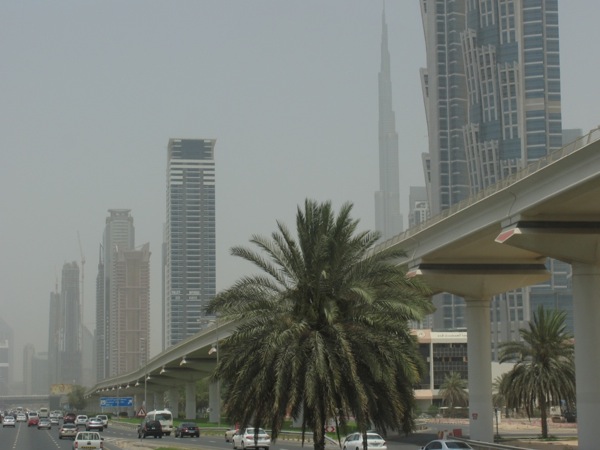
Dubai – a hot, smoggy, rapid desert-to-the-biggest-everything-in-the-world transformation
We started in Dubai, where daily temperatures around 42C were still below the summer peaks of 50C plus. More of a stopover than an obvious destination for a garden tour, Dubai nevertheless does have some gardens and a challenging landscape industry. With its rapid desert-to-the-biggest-everything-in-the-world transformation, this place is a mind trip where the scale of everything is hard to grasp, and its glittery, modern face is astonishingly different to its beginnings. I couldn’t help wonder whether in 100 years time it will be a great metropolis or a ruin being gently reclaimed by the desert sands.

Dubai clever palm-style phone tower
Dubai has the highest per capita consumption of water in the world (it all comes from massive desalination plants). The ‘just add water’ mentality pervades landscaping projects across the city. Take the existing desert sand, lay drip irrigation pipe in close formation across the surface, and then roll out the turf or plant the flowers. Add water 3 times every day. Transformation achieved – see the photo of recent turfing below kilometres of the new, elevated Metro system. Remarkably I saw no evidence of soil improvement or mulching – and I was looking – although I believe there is a push from a leading landscape company to introduce mulching. Novel idea!
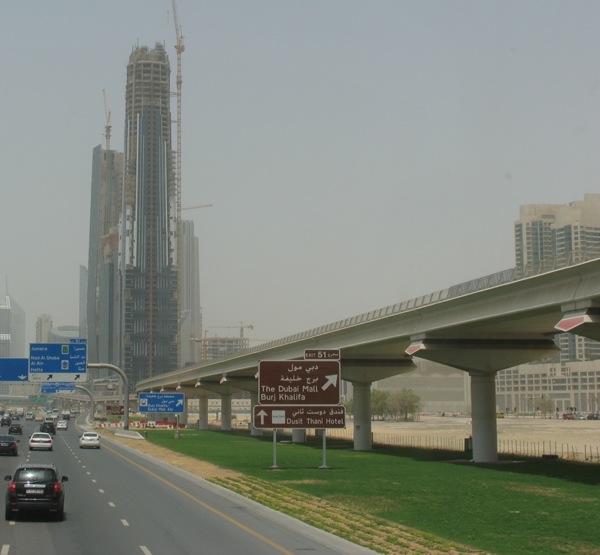
Landscaping Dubai style – lay drip irrigation over pure sand & water 3 times a day to achieve the highest per capita water consumption in the world
Dubai is famous for its mobile phone towers that look like palm trees. In a city that features date palms as the dominant street tree (see photo), it’s surprisingly effective – that’s a mobile phone tower in the other photo. I’ve also included a photo of the latest in barbecue models for sale at the Dubai Garden Centre – rather different in style to Australia’s best-sellers.
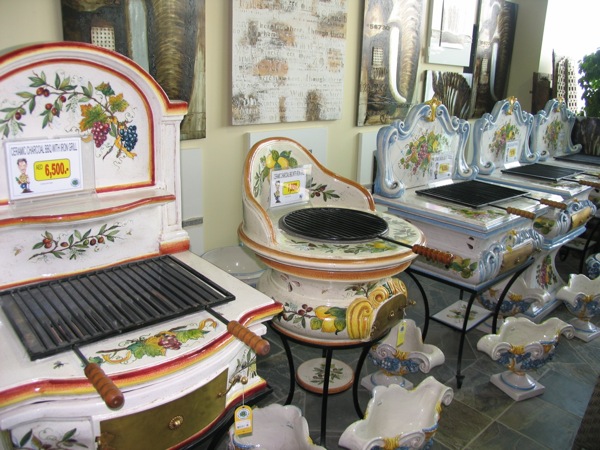
Latest model BBQs for sale in Dubai
In London, the Chelsea Flower Show is always amazing and should be on everyone’s must-do list. Yes, it’s impossibly crowded but the English are very polite crowds. Yes, it’s expensive – once you pay the airfare, the show’s entry ticket will cost you 49 UK pounds – about $76 – if you can get one. The show is always a sell-out well before opening. But it’s a show like no other and the plants and flowers on exhibit are the best of the best. I suspect the 2m-tall delphiniums are on steroids but drug-testing is not part of the judging process. Check out two pictures of yellow-flowering trees in the Great Pavilion (this enormous marquee is 12,000 square metres or the size of 2 football pitches). The first is a real tree – Laburnum x waterei ‘Vossii’ but the second has been lovingly created using thousands of yellow orchids. Beautiful!
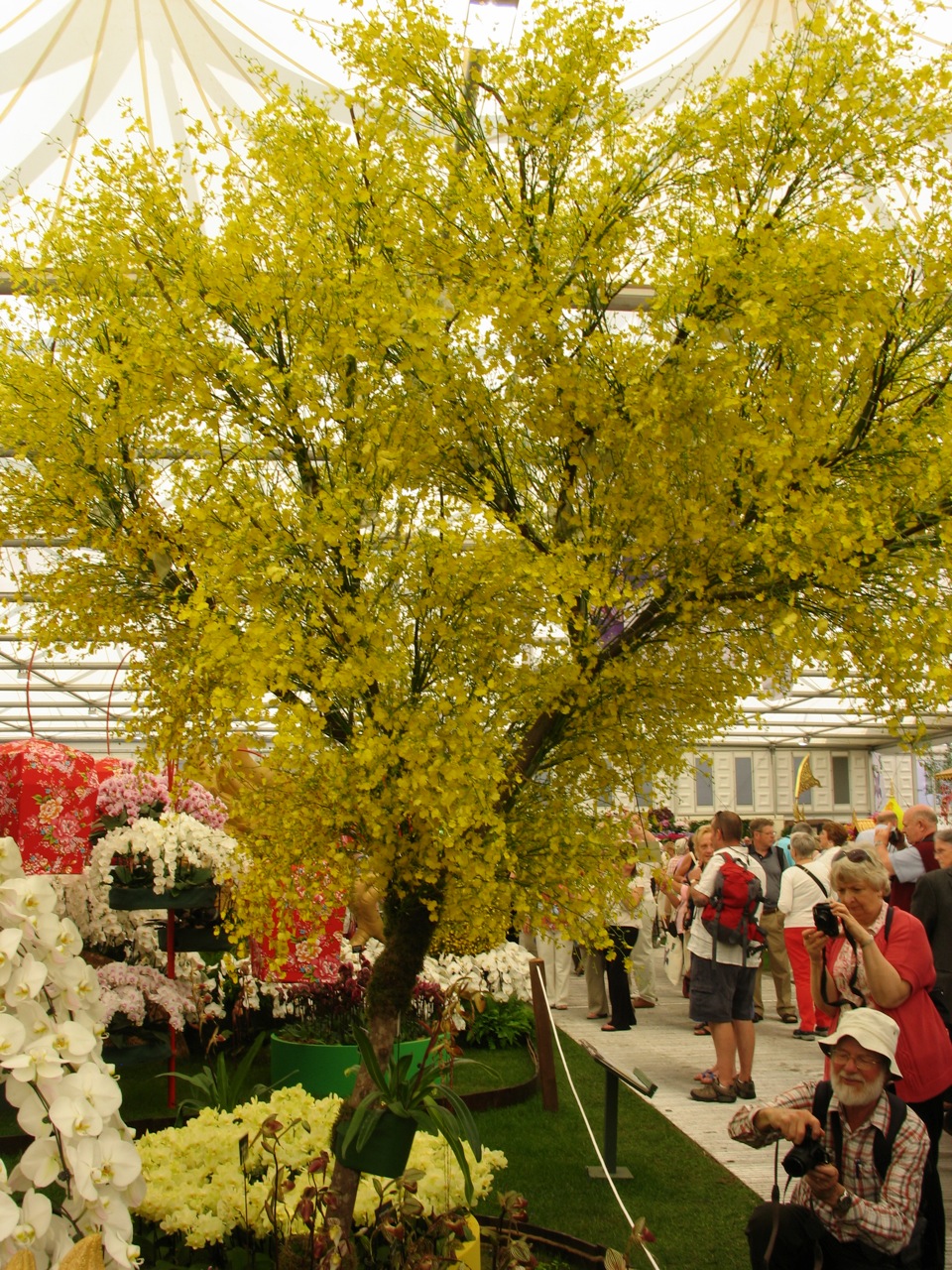
Another stunning yellow ‘tree’ at Chelsea 2012 but this one is made from hundreds of yellow orchid flowers
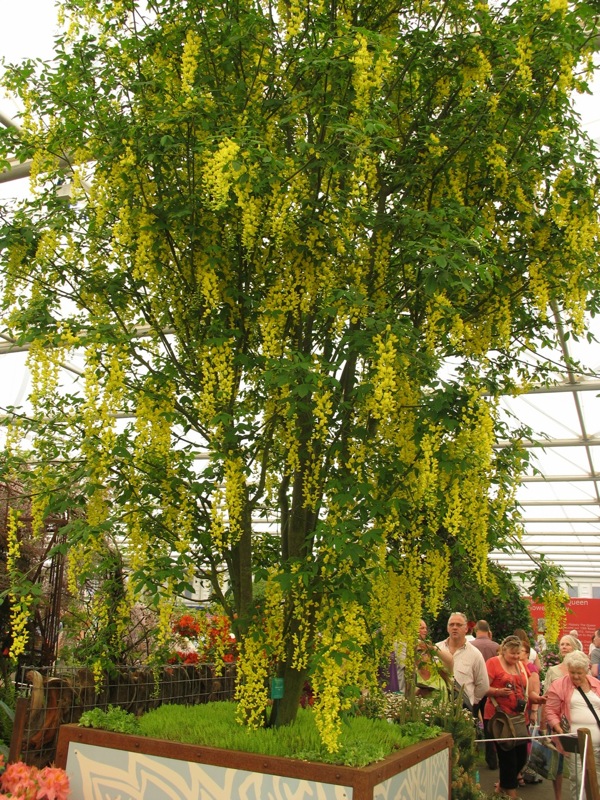
Chelsea Flower Show 2012 – spectacular Laburnum waterei ‘Vossii’
I also loved the juxtaposition of tree trunks and built timber structure in Joe Swift’s show garden for Homebase Teenage Cancer trust. The garden won a gold medal, and featured a colour scheme of orange, yellow, burgundy and rusty brown. Swift’s huge, polished cedarwood frames created long views through the garden whilst dividing the space into smaller areas across the garden. The placement of several Prunus maackii ‘Amber Beauty’ was inspired, juxtaposing the same burnished copper colour and horizontal banding of the natural tree trunks with exactly the same appearance in the man-made timber frames.

Designer Joe Swift cleverly juxtaposed a cedarwood framework with the similarly burnished & banded trunks of Prunus maackii ‘Amber Beauty’
Over in Amsterdam, we visited the Aalsmeer Flower Auction, the centre of the world flower trade, accounting for one third of worldwide flower sales. Around 20 million flowers and 2 million pot plants are sold every business day, using the Dutch auction system where a clock showing the price, starts high and decreases until a bid is made. The whole operation is mind-blowing in size and efficiency and speed. Buyers have only a fraction of a second to bid – there are close to 120,000 clock transactions per day in the auction period between about 7am and 11am – I calculate that’s about 8 per second. There are actually 50 clocks across 6 locations and lots of on-line buyers too. The photo shows one of the auction rooms, with the stock being auctioned in constant movement across the front of the room. An ingenious, automated shuttle system distributes 2600 flower-laden carts per hour within Aalsmeer, delivering each buyer’s lots to their bays for immediate shipping.
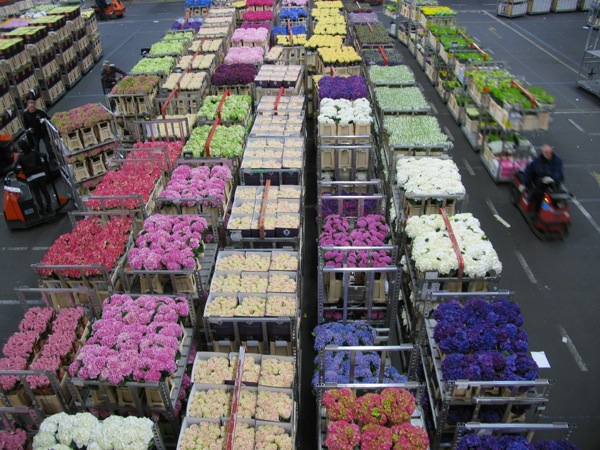
A tiny part of the Dutch Aalsmeer Flower Auction house, where 20 million flowers & 2 million pot plants are sold everyday

At the Dutch Alsmeer Flower Auctions, nearly 120,000 transactions are concluded every day during the 4 hour auction period
The building is one of the worlds biggest, covering 990,000 square metres. The photo shows a miniscule portion of operations, taken from the overhead catwalk installed for tours of the operation. If you are near Amsterdam, don’t miss it. Pot plants are an increasing part of the story, with some ‘innovative’ products on show. I present for your judgement a photo of the latest in spray-painted Echeverias.

Spray-painted Echeveria for sale at Aalsmeer. You be the judge.
